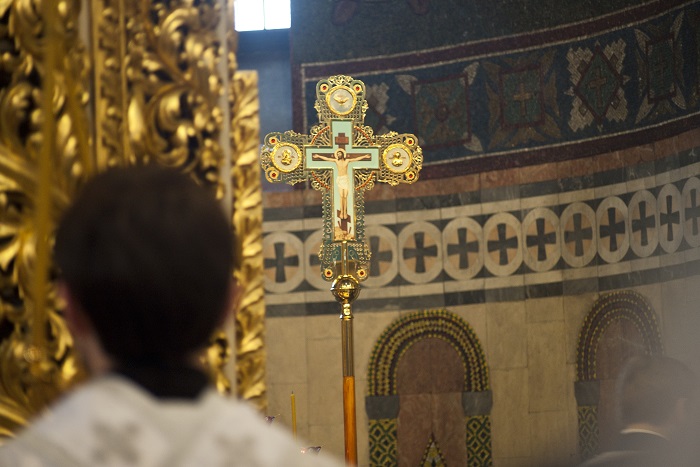Those who follow much of the current pop-psychology and religious thought might be under the impression that perfect, unending peace of mind is the assumed goal for everyone; that one must strive to conquer one’s inner conflicts to such an extent that stress is altogether eliminated.
Ridiculous!
If tension-free living is your goal get ready for an incurably unhappy life.
There is nothing living that does not live by way of tension. Whatever is not in tension is dead. Otto Rank was one of the first psychologists to note that, “individuals seem to prefer to absolute rest a certain condition of tension, perhaps because absolute rest could only be death.”
Indeed, can the goal of attaining a state of perfect rest translate into anything other than death?
Besides, one is kidding himself if he thinks for a moment that he truly wishes to live a perfectly tense-free life. Take sports for example. What is a sport but a manufactured scene of combat, a way to bring tension to its highest pitch, albeit in a controlled environment? And nearly any pursuit one can imagine, whether relationships, work, school, games, etc., has tension already built in as a primary attracting feature.
This tension is a basic mode of life. By itself it is neither good nor bad; it is what one does with it that makes all the difference.
The Christian is often the first to object to the notion of a believer expecting anything less than perfect peace. He will quote familiar passages in the Bible of God supplying perfect peace to the one who puts his trust in Him. But the Christian should actually be the first to acknowledge that tension can indeed be holy. Christ Himself was no stranger to tension. So much so that He literally sweats blood just before His crucifixion praying “Not My will but Yours be done”; not exactly a great example of tension-free living.
One can even go back to the very beginning of the story. Adam, that original primordial image of perfection, made in God’s likeness and image, had yet one major flaw which displeased God—he was alone. Paul Evdokimov reflecting on the Biblical account of the creation of Eve saw that the story “set up the original archetype of the consubstantiality of complementary principles. The masculine and feminine form the archetypal human monad: Adam-Eve” (Carl Jung is famous for finding this archetypal human monad of both masculine and feminine—the hermaphroditic image—woven throughout the myths and legends of nearly every culture on earth, both ancient and modern, giving weight to the fact that this Adam-Eve monad is not an isolated story but something all people everywhere have been in touch with, if not unconsciously). Why was the original Adam-Eve monad made into a dyad? It is my guess that the Genesis account points to the fact that individuals are not truly whole beings until they are in Holy Communion. This is why the sacrament of marriage is so vital to the Orthodox Christian faith—two becoming one flesh. Self-perfection is not enough. Just as God’s own being is communion—the Holy Trinity—He created humans to have their being in communion as well, perfect communion with the God of infinity.
Tension helps teach the one who fears vulnerability and loss of individuality how to be in communion with the ‘other.’
St. Gregory of Nyssa taught that “every limit contains in its essence a beyond, its own transcendence, and this is why the soul can rest only in the actual infinity of God.” All human beings have in their very essence their own transcendence. This correlates to the natural drive in each of us to go beyond our limits, setting the stage for endless inner tension.
Mankind was designed to live in holy tension; the tension of overcoming our human limits and ascending to God via communion with Him and one another. It is not that peace is unattainable; rather peace should not be equated with the total removal of tension, not this side of heaven anyway. A human in tension is like gold in a furnace; it burns off the guck while refining the good stuff.
Besides, trying to attain a tension-free life is a very stressful way to live.



